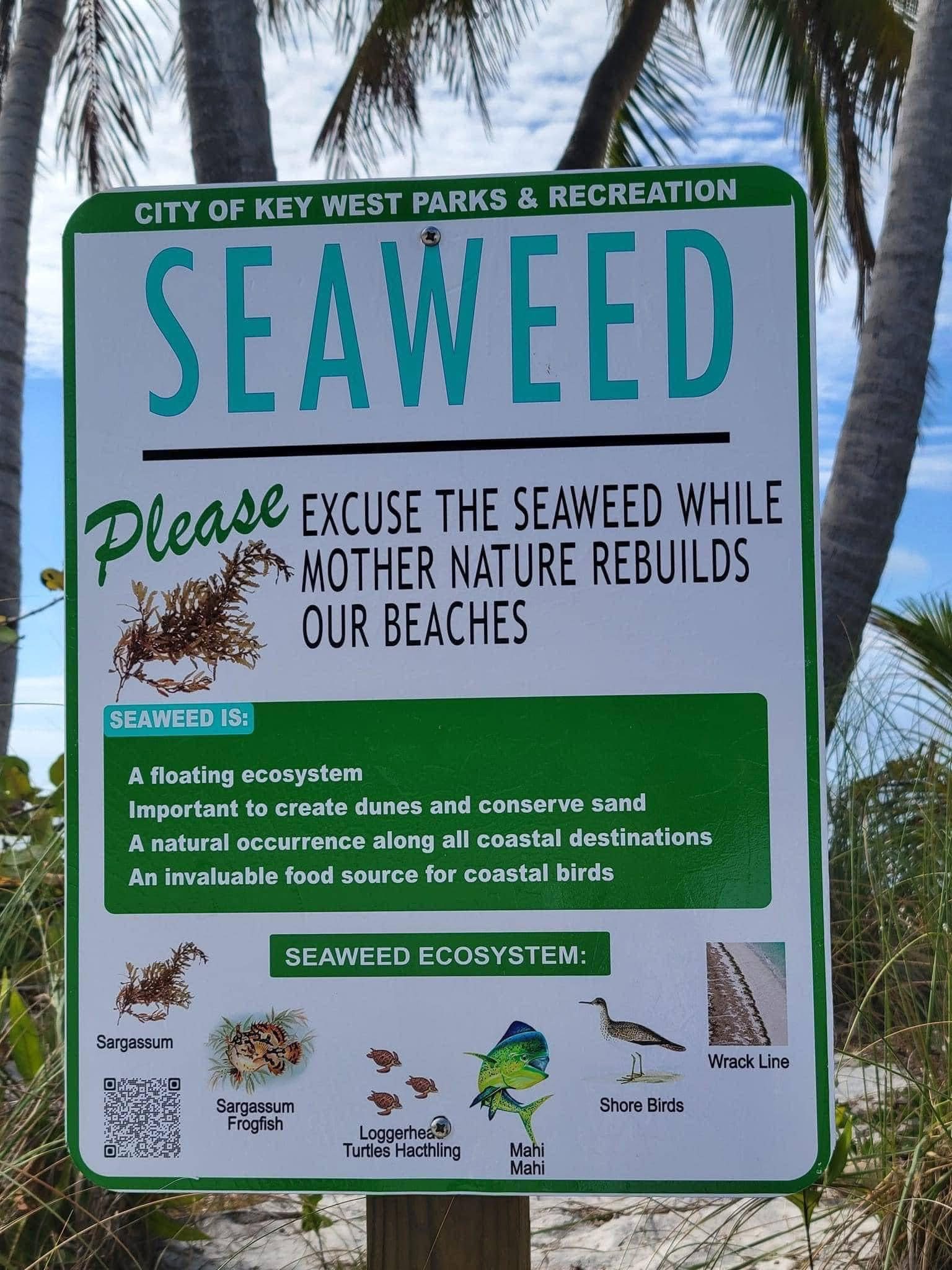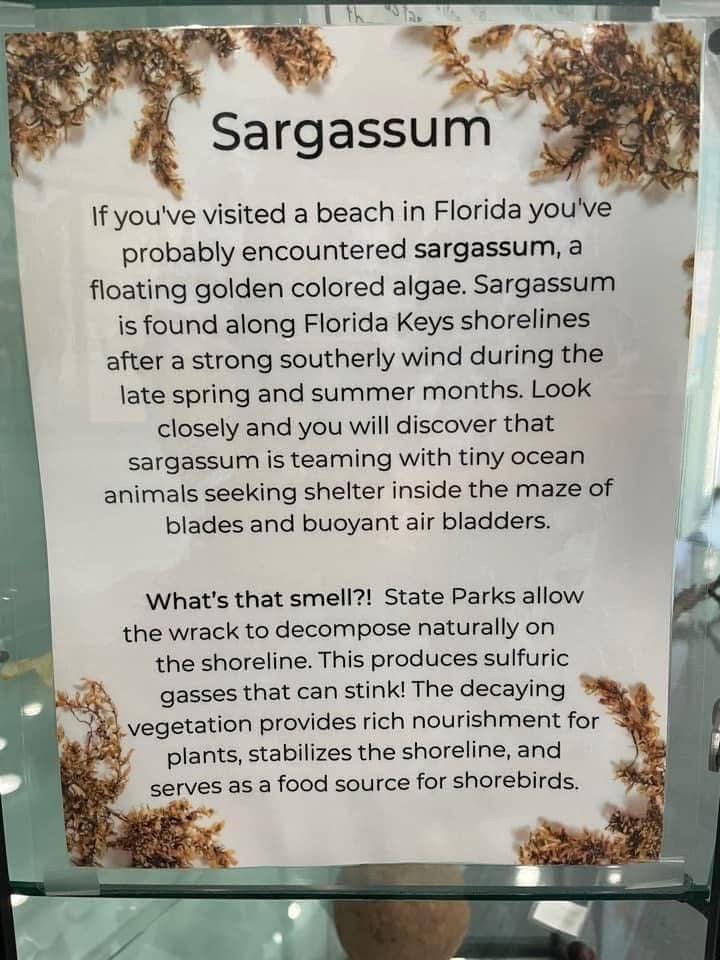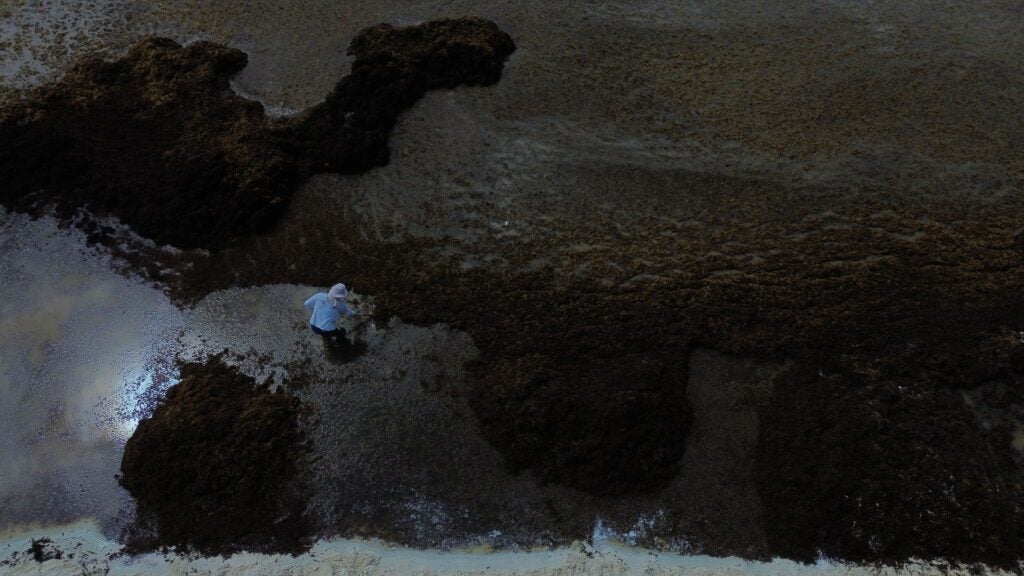August 7, 2025
Sargassum Surge: What’s Fueling More Stinky Seaweed?
BY: Anna Baxter
Have you seen reports of stinky seaweed blanketing beaches in Belize, Mexico, and even parts of the United States like Florida and the Carolinas? Well, this seaweed has a name: sargassum. And this year, there’s more of it than ever before.
What is Sargassum?
Sargassum is a type of brown algae that floats on the surface of the ocean. Unlike some seaweeds that grow on the ocean floor, sargassum grows on top of the water using little gas-filled “berries” that help it float.

Out in the open sea, sargassum is actually a good thing! It is home to various marine species including baby sea turtles, fish, and crabs. Commercially important species like mahi-mahi eat the smaller marine life in sargassum mats. It also helps the ocean stay healthy by making oxygen.
Sargassum washes ashore every year. It’s a natural and important part of the coastal ecosystem. Birds like plovers, sandpipers, and red knots use the washed-up seaweed to forage, rest, and hide from danger. Plus, as sargassum decomposes, it stabilizes the shoreline and provides nourishment to plants.


In Key West, Florida, these signs teach beachgoers about the benefits of sargassum. Credit: Oceana/Catherine Uden
But when too much sargassum grows and lands on the shore, it can become a problem. One that cities spend millions of dollars on annually.
Beyond being a public nuisance and its notorious rotten egg smell, large sargassum mats can accumulate high levels of heavy metals, microplastics, and other marine debris. They can block sunlight from plants and animals including coral reefs, according to NOAA. And when they decompose, they can reduce the amount of oxygen in the water, which can stress or kill plants and animals.
Sargassum also emits a gas as it decomposes that may irritate individuals with pre-existing respiratory conditions. Large mats of sargassum also can lead to temporary beach closures, impacting tourism and the economy.
Record Levels This Year

Scientists say there is more sargassum this year than ever before in the Caribbean and Atlantic. According to the University of South Florida, 37.5 million metric tons (41.3 million US tons) of sargassum have been detected so far in 2025.

Like much of the Caribbean, Belize’s beaches are being hard hit by sargassum. There, several areas are under a sargassum emergency as thick mats of the brown algae continue to blanket the country’s renowned shores. Crews with shovels and wheelbarrows are working around the clock, but the seaweed just keeps coming. Locals say the stench is overwhelming, the beaches are buried, and coastal businesses are feeling the heat as guests complain. According to Oceana staff in Belize, the fishing sector is also struggling due to the amount of seaweed.
In Mexico alone, over 44,000 tons of sargassum have been removed from marine and coastal areas this year!

Even U.S. beaches are seeing more sargassum than usual this year, especially in spring and summer, just when families want to enjoy the beach.
What is causing this increase in stinky seaweed?
It’s a bit of a mystery! Scientists are still researching what is causing this influx of sargassum.
It’s possible that increasing runoff from land, particularly from human sources like sewage, play a role in boosting nutrients in the water. These nutrients provide sargassum with more food to grow.
Other potential causes include changes in wind and ocean currents that could push existing sargassum mats into new areas, where they have the chance to bloom even bigger.
Scientists are also studying whether warming oceans driven by fossil fuel pollution are making blooms more frequent and severe. When humans burn fossil fuels, it puts gases into the air that trap heat and make the whole planet, including the oceans, warmer. Warmer water might sometimes help sargassum grow faster and float longer.
If you’ve encountered a beach overwhelmed by seaweed, you probably weren’t thinking about fertilizer, currents, and climate change, but that just goes to show how interconnected the ocean really is.



